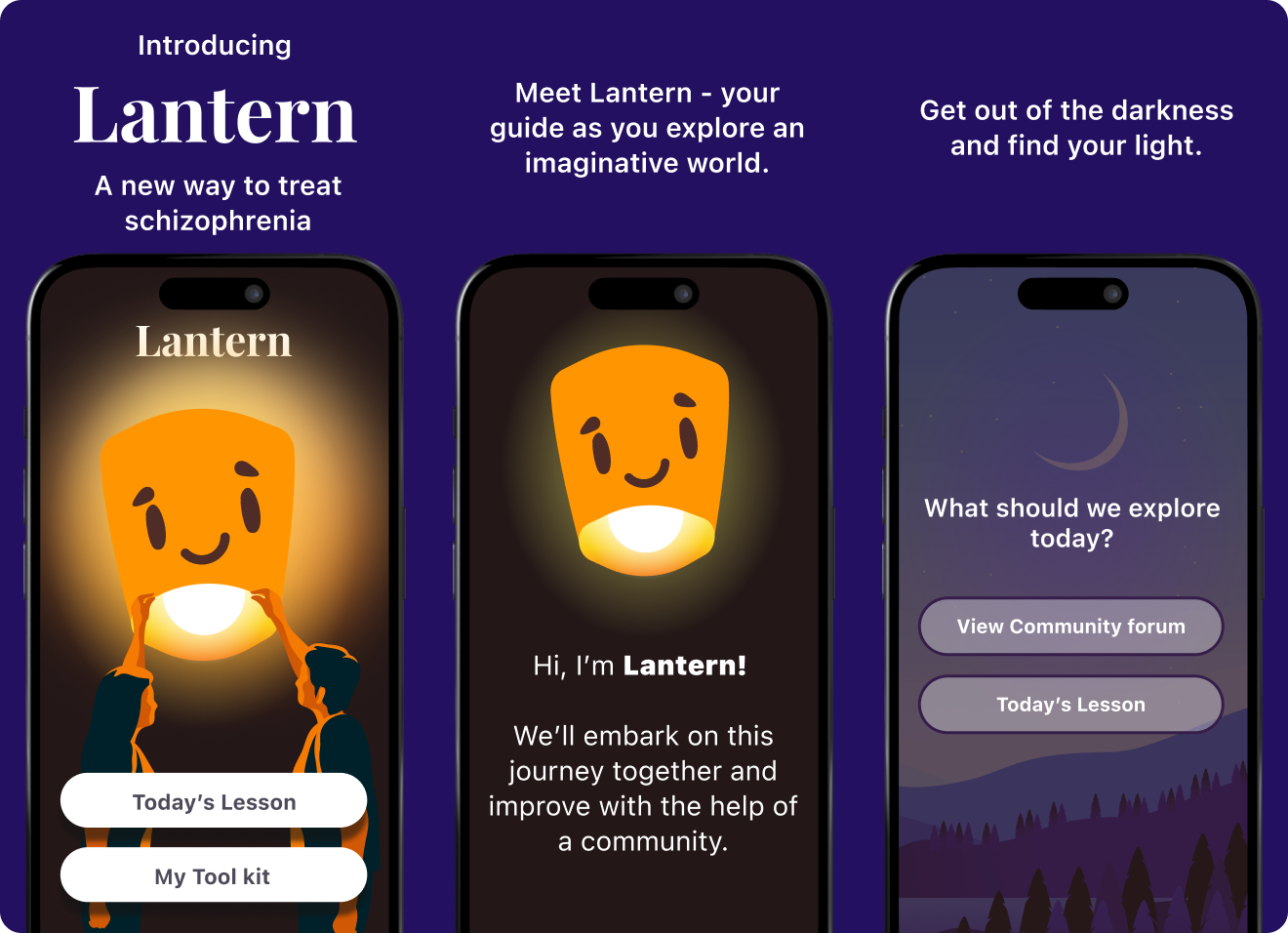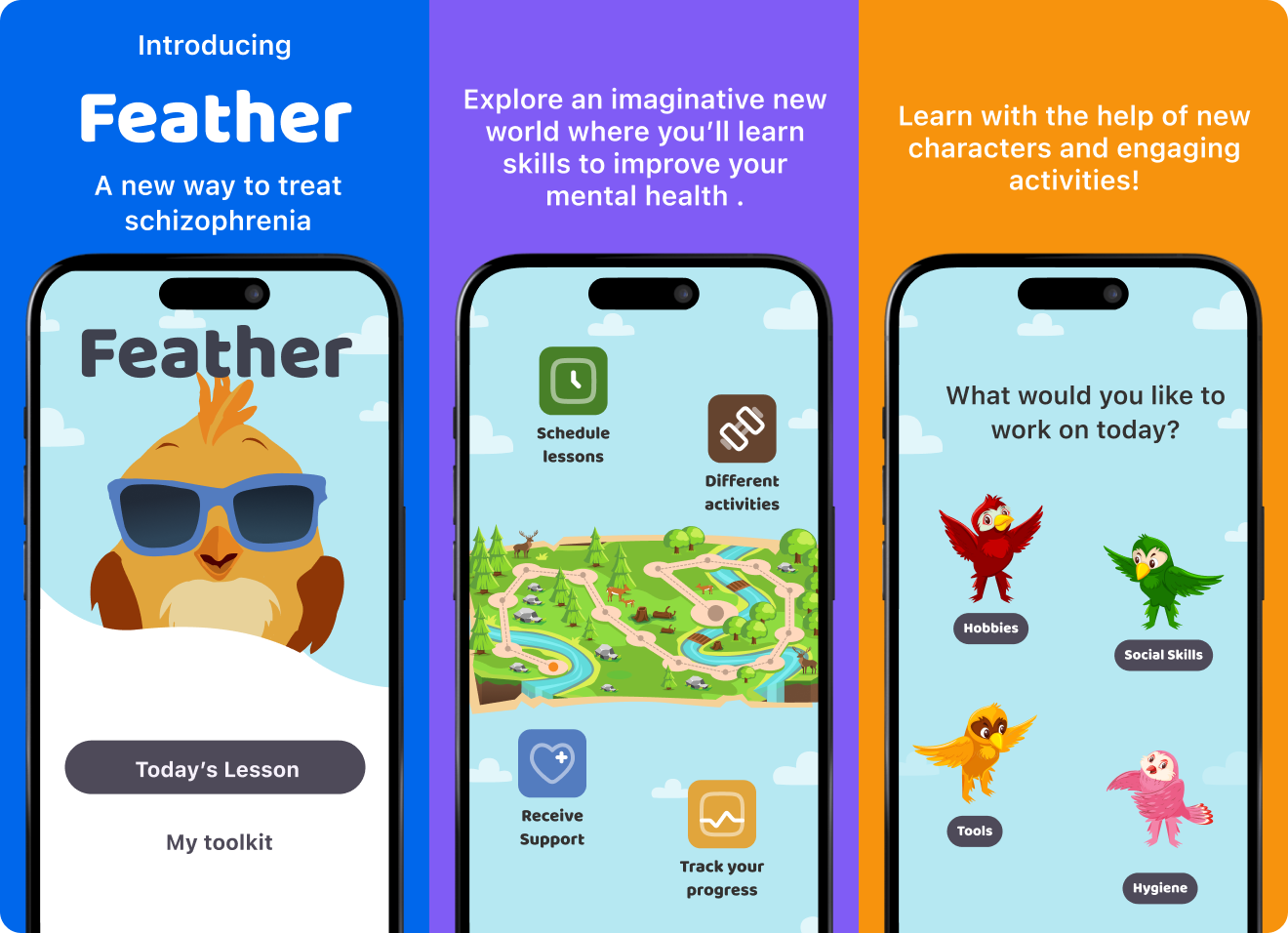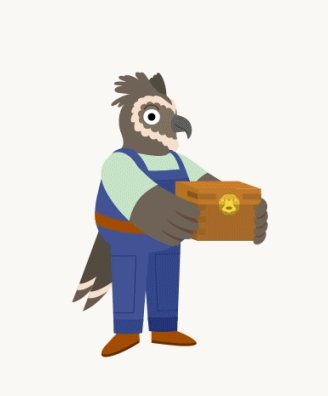
Building companions in care: the role of narrative design in a schizophrenia treatment app
Click Therapeutics

The challenge
This case study delves into the narrative design behind Feather, a treatment app designed for individuals managing schizophrenia. Feather leverages narrative-driven content to foster engagement and create meaningful emotional connections throughout the user’s therapeutic journey. With a 16-week treatment program, maintaining user engagement was crucial.
During the first clinical study, the app featured a rushed narrative about an orange blob-like figure with schizophrenia. While users appreciated the attempt at storytelling, the narrative was inconsistent, visually inconsistent, and sometimes emotionally triggering (e.g. references to living on a train, when many patients have struggled with obtaining housing). Despite these flaws, users expressed interest in more cohesive and relatable storytelling.
By incorporating narrative design, we aimed to transform therapy from a clinical experience into an immersive and relatable journey, encouraging users to stay committed to their path toward well-being. A stronger narrative would improve the digital working alliance—the therapeutic bond between the app and its users—by fostering emotional connection, engagement, and trust throughout the program.

Research insights and goals
To address this, I conducted competitor research to identify key elements of successful narrative design. I learned that effective therapeutic narratives are user-centered, align with treatment goals, convey progress, engage users interactively, remain cohesive and inclusive, provide positive reinforcement, incorporate gamification, and evoke emotional resonance while avoiding triggers.
Our goal was to redesign the narrative to foster connection, increase engagement, and improve outcomes, addressing both user and business goals:
User goals: Improve CSAT question responses, asked in the clinical study exit surveys, around feeling supported (currently 55%) and trusting the app (currently 50%).
Business goals: Improve treatment completion rate (currently 67%) and in-app self-reported adherence in hobbies (63%), socialization (57%), and hygiene (64%).

Choosing the right characters
I led the effort from ideation to launch, collaborating with our product/science leads and testing with schizophrenia patients at our partner clinics. We began by designing and testing three character types. Birds emerged as the favorite for their balance of relatability and warmth. They felt grounded yet symbolic of growth and freedom.

Crafting the narrative
With “Feather” as our guiding concept, we shaped an interconnected narrative realm that matured through continuous feedback and testing. Initially, we experimented with a wide range of character attributes—some more lively and playful, others calm and reassuring.
Guided by user responses, we refined these qualities until we struck a deeply resonant chord: an environment that felt trustworthy and empathetic, while still inspiring a sense of steady forward movement. This process transformed early sketches into a nuanced narrative world, ensuring that each element supported the user’s therapeutic journey.

Injecting the narrative
The birds appear throughout the app; guiding users, sharing personal stories and reinforcing treatment goals.
Education screens
Comic screens

Home screens
The impact
The redesigned narrative resonated deeply with patients, who described the bird coaches as relatable, comforting, and motivating companions. Many users felt less lonely and sought deeper connections with the characters, praising their backstories and companionship.
This enhanced connection led to measurable improvements in key metrics measured at the end of the next clinical study:
Feeling supported CSAT: 71% felt supported (+16% from before).
Trust in the app CSAT: 64% trusted the app to guide them (+14%).
Treatment completion rate: Increased to 74% (+7%).
Self-reported adherence: Hobbies (66%, +3%), socialization (68%, +9%), and hygiene (70%, +6%).
“I felt like Mark really understood what I was going through.”
“They made my day better, not just another app or treatment.”
“The birds kept me motivated; it felt like I had a real companion guiding me”

Reflection
Building narrative-driven empathy, we transformed a clinical journey into a more humane one.




























